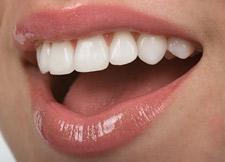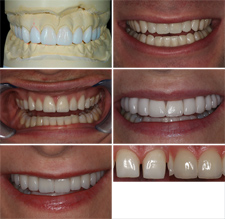 The good, the bad and the ugly.
The good, the bad and the ugly.
Dr James Russell is a Director of the British Academy of Cosmetic Dentistry and a member of the American Academy of Cosmetic Dentistry. He lectures on cosmetic dentistry both and has helped develop new techniques for the ethical provision of cosmetic dentistry. His opinions and skills have been featured in the press and on TV.
Cosmetic dentistry can be hugely rewarding for both dentists and patients alike but at the same time the potential for problems is huge and when problem do arise the costs involved and elective nature of the treatment can make it very difficult for the dentist to control the situation which can arise if you fail to meet patient expectations.
The key thing is to ensure:
1. Both dentist and patient agree on the end result.
2. Patients are aware of all the treatment options
3. Patients fully understand any potential short and long-term complications.
4. The dentist is working within their skill and experience level and working with a suitably trained technician.
5. Valid consent is obtained and meticulous records are kept.
It's beyond the scope of this article to discuss specific clinical techniques, but the main message is, "Know where you are going and how to get there before you start".
Many of the problems in cosmetic dentistry arise from a failure to understand the patient's expectations and to accurately communicate the intended final result. There are several tools that I use with every new patient to help ensure dentist and patient are on the same wavelength:
1. High quality digital photography
Aside from their use as legal records photographs are essential to enable co-diagnosis as most patients find it hard to communicate their cosmetic concerns verbally. Digital SLR cameras are easy to use and provide amazing detail. The British Academy of Cosmetic Dentistry (BACD) recommends twelve views that, taken properly, will allow a thorough evaluation of all the teeth.
2. Computer imaging
Digital manipulation of photographs to show what results are possible is one of the best techniques a dentist can use in the early stages of potential treatment discussion. This is not pasting library smiles but accurately altering teeth and tissue to ensure that the image is highly realistic in terms of what can be achieved. This predictable and inexpensive tool can prevent communication and expectation problems from an early stage - either confirming a chosen plan or stopping treatment before it starts. You don't need specialist dental software, Photoshop Elements with a graphics tablet is more than enough.
3. Diagnostic Wax-up
Once a treatment plan has been agreed then impressions and bite records (in CR if
indicated) should be used to create a highly accurate aesthetic and functional diagnostic wax-up. Putty matrices of the wax-up can also be used to create a trial smile by injecting a temporary crown material into the matrix and seating this over the natural teeth. Once set, both the dentist and patient can visualise the intended result in the mouth and, if required, make any adjustments at this completely reversible stage. The wax-up should also be used to make preparation guides to allow the dentist to accurately remove the minimal amount of tooth required, allowing for thickness of material and the position of the final restoration. A further use of the wax-up is that temporary restorations can be made from the matrix after tooth preparation allowing easy fine tuning of the aesthetics, function and also shade evaluation. See figure 1,2,3.
Case Study:
This case is a great example (see figure 4) of miscommunication, followed by poor execution by both the clinician and technician. The result was an unhappy patient and legal proceedings.
 The patient had asked for a whiter, wider smile but the end result was highly unnatural due to improper axial inclinations, bulky teeth and highly opaque ceramics with poor surface anatomy but the main issue that lead to this case turning nasty rather was that no wax-up was created before preparation and therefore the patient had no idea of what her final result would actually look like. If this preparatory stage had been included the dentist would have had an opportunity to put things right, before any tooth preparation was performed.
The patient had asked for a whiter, wider smile but the end result was highly unnatural due to improper axial inclinations, bulky teeth and highly opaque ceramics with poor surface anatomy but the main issue that lead to this case turning nasty rather was that no wax-up was created before preparation and therefore the patient had no idea of what her final result would actually look like. If this preparatory stage had been included the dentist would have had an opportunity to put things right, before any tooth preparation was performed.
The corrected case in figure 5. shows a much more natural smile and a happy patient. The final facial surface was a full 3mm more palatal than in the first set of veneers.
Summary
Following best principles in the early stages of a case will always make the treatment more predictable and less stressful.
Some key factors to always bear in mind are:
- Don't ignore the basics: Chart, perio, radiographs, study models.
- Have the knowledge and information to make an accurate cosmetic diagnosis.
- Present all options (Bleach, orthodontics, composite bonding etc) Sometimes a combined approach will have benefits. See figure 6.
- Make the patient fully aware of all risks / benefits.
- Ensure all patients concerns will be met or any limitations have been understood.
- Make sure you can provide the treatment with confidence.
- Understand the material science involved.
- Charge enough to choose a good lab.
- Never compromise clinical perfection for cosmetic goals.
- Be prepared for aftercare.
And most important - if you're not sure, don't do it. If you want to learn more about cosmetic dentistry then find a mentor and go on as many courses as are needed to create a zone of confidence based on proven skills.
Cosmetic dentistry [Download PDF]
Dental Protection provides a whole range of risk management to support you through your career.
Find out more